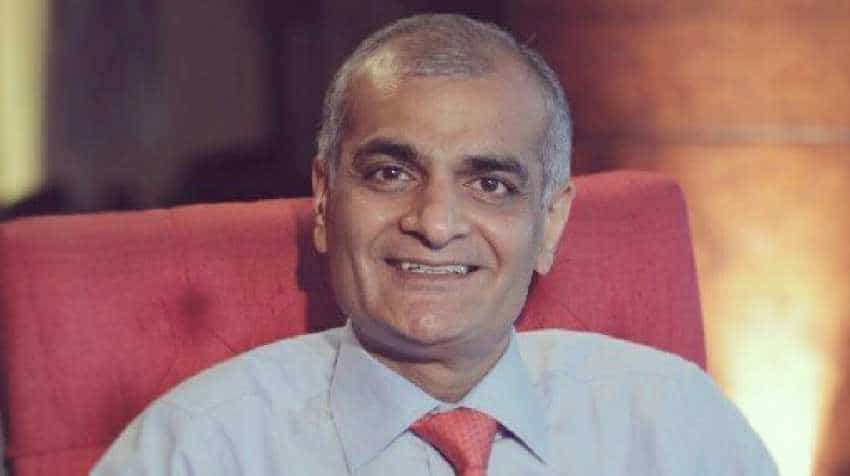MSME segment is one of the most potent growth engines for Indian economy: Rashesh Shah
Rashesh Shah, Chairman and CEO, Edelweiss Group said, “India’s MSME segment is one of the most potent growth engines for the Indian economy, contributing significantly to GDP and playing a vital role in employment generation and overall economic activity.

Celebrating the spirit of entrepreneurship on International MSME Day, ECL Finance Limited, which is part of Edelweiss Group, hosted an expert panel of eminent industry speakers to share insights and expertise on the current business environment, its challenges and what lay ahead. Keeping in line with the UN Theme for #MSMEDDay19, the topic chosen for discussion was “Digitalization – Is it Big Money for Small Businesses?”.
Addressing the event in Mumbai, Rashesh Shah, Chairman and CEO, Edelweiss Group said, “India’s MSME segment is one of the most potent growth engines for the Indian economy, contributing significantly to GDP and playing a vital role in employment generation and overall economic activity. I strongly believe that technology has the potential to and will eventually transform how MSMEs operate in India."
"Edelweiss has been one of the early adopters of technology in the lending space. We have been at the forefront of testing and adopting several digital initiatives which span customer acquisition, credit decision architecture, on-boarding and customer life cycle management, helping us stay ahead of the curve, while anticipating the future needs of our SME clients," Rashesh Shah said, adding "It gives me immense pleasure to see our SME partners validate our belief in the potential of this emerging sector.”
In lieu of SMEs focusing on sustainable development goals and their access to credit for the same, the discussion threw up the following key insights about the sector and its future.
1. Historically, India has always been a capital / credit starved economy. And in such a scenario, less than 50% of the credit available in India, has made its way to the MSME segment, with most of the credit being given to larger corporations. With the advent of technological advances, initiatives like GST and formalization of the economy, the working capital needs of MSMEs has increased. At the same time, the credit available to them has gone down. This represents a major opportunity for banks and NBFCs who can leverage this and create a new market that meets this unsatiated demand. However, just the mere hypothesis of an opportunity is not significant. Adequate investment in technology, people and in understanding prevalent and future needs of the sector and customers, is equally significant to capitalize on the potential that this opportunity represents
2. Digitalization is making SME business models and access to credit more viable. Digitalization as a journey for SMEs today is inevitable. With the efforts of the Government and the introduction of the India stack, this journey will intensify and will lead to a drastic change in digital transactions over the next 5 years. Digital disruption such cloud computing, analytics, machine learning and AI will help sustainable SME lending. As compared to traditional lending parameters, access to data and technologies like cloud computing can allow for easier assimilation of data that can be then crunched into meaningful insights and better customer segmentation. This would provide a more granular and in-depth understanding of a customer’s risk profile and needs more optimally
3. India is phygital journey. In order to serve the diverse needs of the Indian market, one cannot only focus on either a digital only or physical only framework. You need an ecosystem where both physical and digital can work together. Phygital frameworks have an invisible intermediary layer in between, which is the digitally assisted layer, that seamlessly aligns physical and digital frameworks together, which helps meet the unique needs of Indian customers more effectively. India by nature is an assisted economy and this culture can’t be changed. Hence, if consumers can be moved from physical to being assisted and then to being digitally savvy
4. The Nandan Nilekani report on Deepening of Digital Payments states that digital transactions per capita data has shown a significant growth – to 22.42 digital transactions per capita at close of FY19 from 2.4 such transactions in FY14. The report further states that this metric is expected to grow by 10X in the next three years. However, India remains a cash economy. Thus, data and transaction history need to be recorded using both cash and digital transactions, which is where phygital has an important role to play in integrating cash into the digital economy
5. India also has the highest per capita digital data consumption rate globally and Indians are quick to adopt to technology. Thus, we can expect the physical to digitally assisted to completely digital journey to accelerate. In the current scenario, companies should be looking to experiment and learning from early loss rates, to evolve into sustainable models that may be completely digital over an extended period. These models should also be sensitive to customer data privacy laws and yet look at building insights that are future centric and adaptable. If businesses focus on customer value, customers will adopt it.
10:49 PM IST






 Big Paytm boost for small business! Launches All-in-One Android POS
Big Paytm boost for small business! Launches All-in-One Android POS Budget 2020 with Zee: Top 5 expectations that MSMEs want FM Nirmala Sitharaman to deliver on
Budget 2020 with Zee: Top 5 expectations that MSMEs want FM Nirmala Sitharaman to deliver on Budget 2020: Gifts that small business sector wants from Nirmala Sitharaman on February 1
Budget 2020: Gifts that small business sector wants from Nirmala Sitharaman on February 1 ClearTax acquires Dose FM, set to expand services to SMEs and individuals
ClearTax acquires Dose FM, set to expand services to SMEs and individuals Forex credit to exporters at below 4% on anvil: Piyush Goyal
Forex credit to exporters at below 4% on anvil: Piyush Goyal